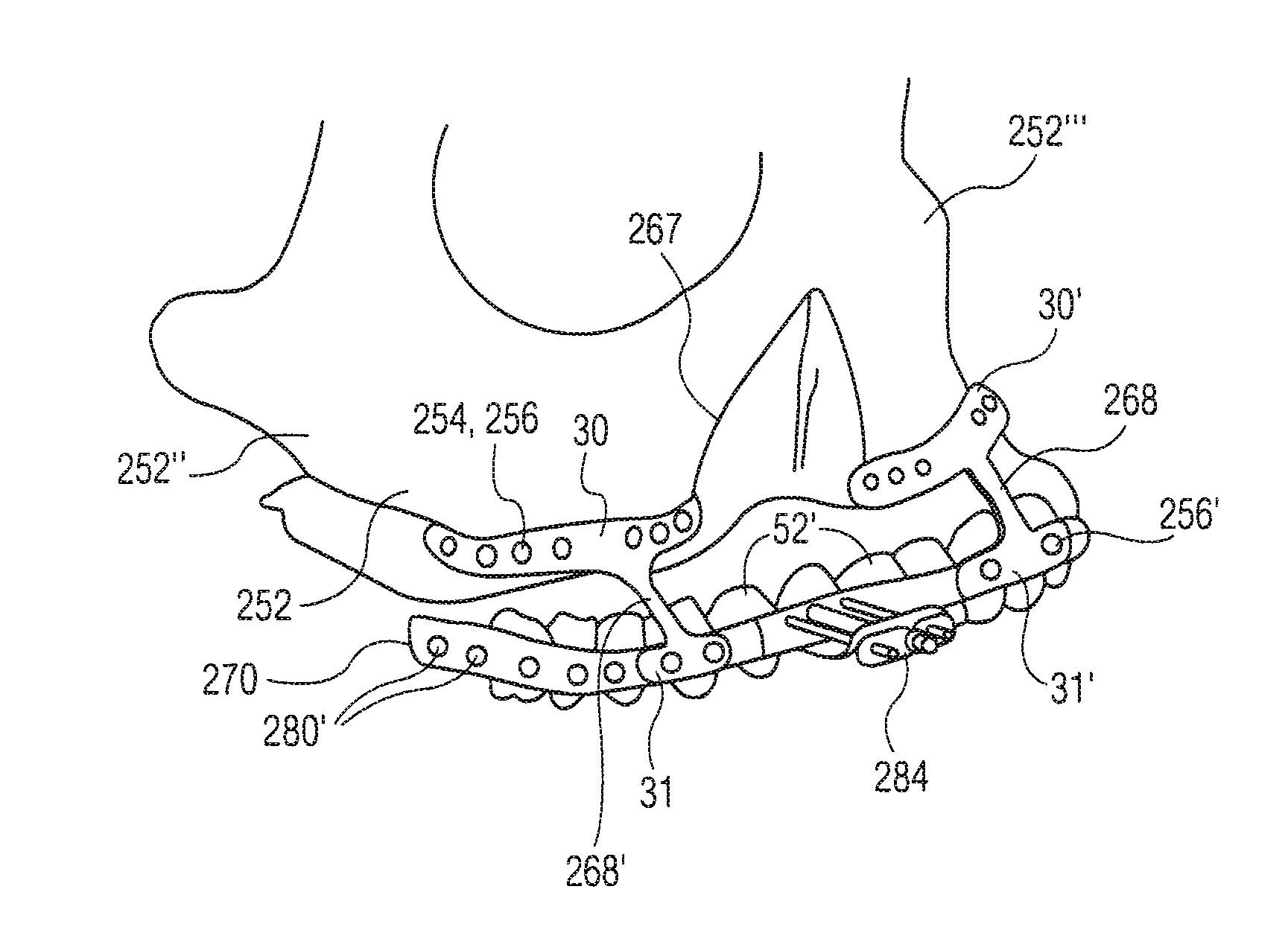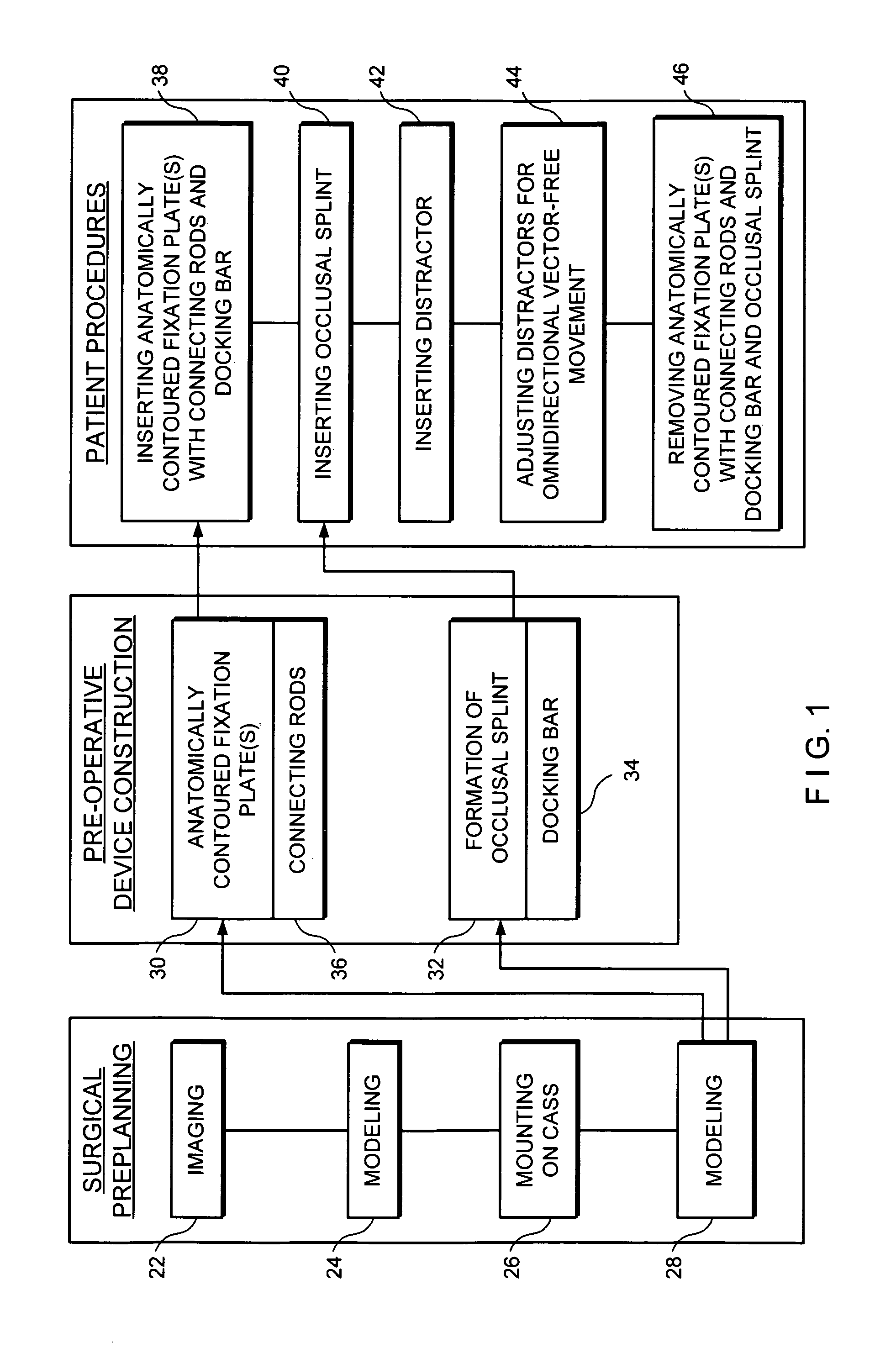Intra-oral devices for craniofacial surgery
a craniofacial distraction and intraoral device technology, applied in the direction of invalid friendly devices, instruments, prostheses, etc., can solve the problems of difficult, if not impossible, to make accurate surgical plans based solely on a limited number of two-dimensional renderings of bone geometry, and the two-dimensional depictions of surgical plans may not accurately portray the complexities involved, so as to facilitate the structuring of pre-operative intraoral devices
- Summary
- Abstract
- Description
- Claims
- Application Information
AI Technical Summary
Benefits of technology
Problems solved by technology
Method used
Image
Examples
Embodiment Construction
[0044]This disclosure describes a new system of orthopedic surgery, which changes present-day craniofacial procedures and is particularly applicable to distraction osteogenesis. In order to work within this new surgical milieu, an initial trio of inventions were required. While the following introductory discussion uses distraction osteogenesis as exemplary, it should be borne in mind that certain devices, such as the craniofacial anatomic surgical simulator (CASS), may be more broadly applied.
Surgical Preplanning
[0045]Referring to the schematic diagram of the system FIG. 1, a general overview of the new system of orthopedic surgery is now provided. Three principal divisions are apparent, namely, (1) surgical preplanning; (2) pre-operative device construction; and, (3) patient procedures.
[0046]Upon initializing the process, an IMAGING 22 of the patient is first undertaken. The IMAGING 22 step may obtain digitized data from scans of magnetic resonance imaging (MRI), X-ray, computed t...
PUM
 Login to View More
Login to View More Abstract
Description
Claims
Application Information
 Login to View More
Login to View More - R&D
- Intellectual Property
- Life Sciences
- Materials
- Tech Scout
- Unparalleled Data Quality
- Higher Quality Content
- 60% Fewer Hallucinations
Browse by: Latest US Patents, China's latest patents, Technical Efficacy Thesaurus, Application Domain, Technology Topic, Popular Technical Reports.
© 2025 PatSnap. All rights reserved.Legal|Privacy policy|Modern Slavery Act Transparency Statement|Sitemap|About US| Contact US: help@patsnap.com



